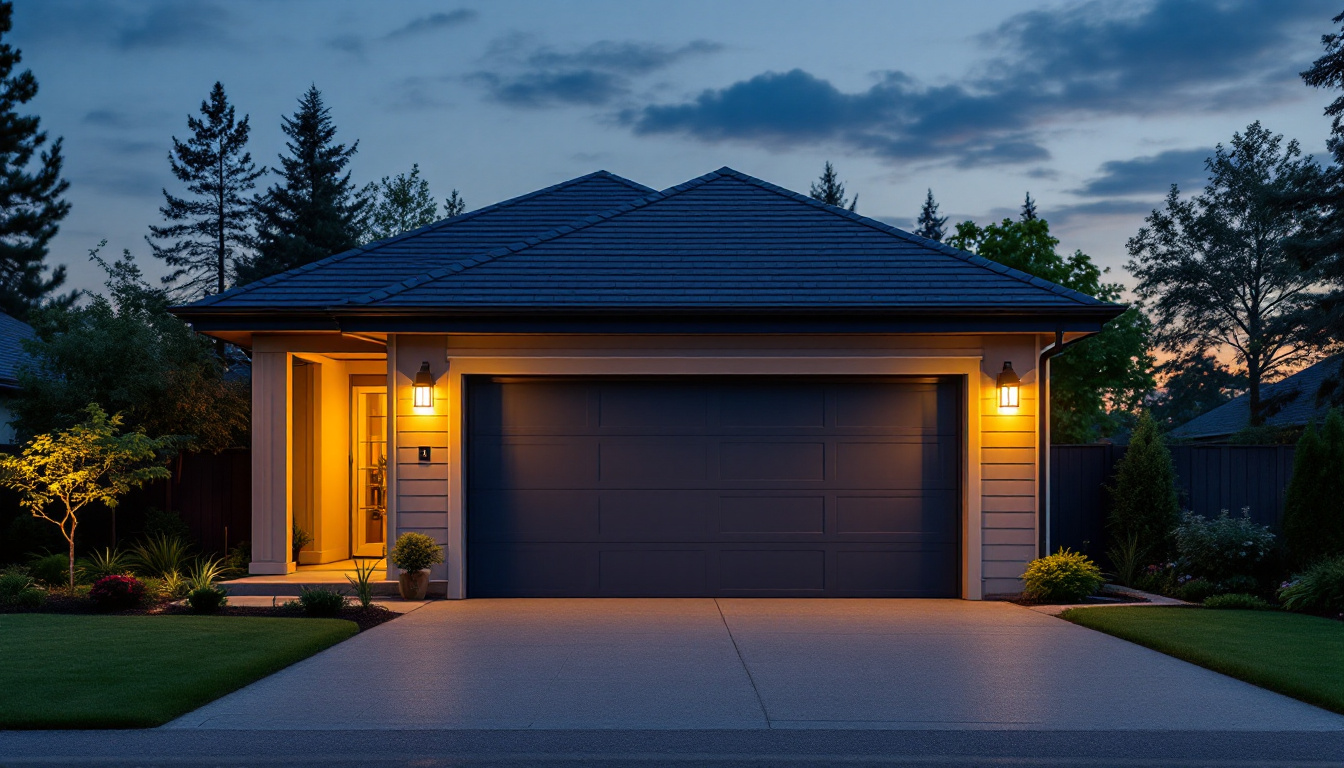

As the demand for energy-efficient lighting solutions continues to rise, solar flood lights have emerged as a popular choice for outdoor applications. For lighting contractors, understanding the nuances of solar flood lights is crucial for delivering effective solutions to clients. This article provides key tips and insights that can help lighting contractors navigate the world of solar flood lights, ensuring they make informed decisions that benefit both their business and their customers.
Solar flood lights are outdoor lighting fixtures that utilize solar panels to harness sunlight during the day, converting it into electricity to power the lights at night. This self-sustaining mechanism makes them an eco-friendly alternative to traditional flood lights that rely on grid electricity. However, the effectiveness of solar flood lights can vary significantly based on several factors, including the quality of the components used, installation practices, and the specific needs of the application.
To fully grasp the functionality of solar flood lights, it’s essential to understand their key components. Typically, these lights consist of solar panels, LED bulbs, a battery, and a control system. The solar panels capture sunlight and convert it into electrical energy, which is stored in the battery for use during the night. The LED bulbs provide illumination, while the control system manages the operation of the lights, including features like motion sensors and timers.
When selecting solar flood lights, contractors should pay close attention to the quality of these components. High-efficiency solar panels and durable batteries can significantly enhance the performance and longevity of the lights. Additionally, opting for LED bulbs with a high lumen output ensures that the lights provide adequate brightness for the intended application. Furthermore, advanced control systems may offer smart features, such as remote operation via mobile apps, allowing users to adjust settings conveniently and monitor energy consumption in real-time.
Solar flood lights can be used in a variety of outdoor settings, making them a versatile choice for contractors. Common applications include illuminating pathways, driveways, gardens, and security areas. They are also ideal for commercial properties, parks, and recreational areas where traditional wiring may be impractical or costly.
Understanding the specific needs of each application is crucial. For instance, a security-focused installation may require lights with motion sensors and a higher lumen output, while decorative lighting in a garden may prioritize aesthetics over brightness. Tailoring the choice of solar flood lights to the specific context can enhance customer satisfaction and improve the overall effectiveness of the lighting solution. Moreover, solar flood lights can also be utilized in temporary setups for events, such as outdoor weddings or festivals, where portable lighting solutions are needed. Their ease of installation and lack of wiring requirements make them an excellent choice for such occasions, providing both functionality and ambiance without the hassle of traditional lighting systems.
The installation of solar flood lights is a critical aspect that can influence their performance and longevity. Proper installation ensures that the lights operate efficiently and provide the desired level of illumination. Here are some best practices to consider when installing solar flood lights.
Before installation, conducting a thorough site assessment is essential. This involves evaluating the area to determine the best locations for the solar flood lights. Factors such as sunlight exposure, potential obstructions, and the intended purpose of the lighting should all be taken into account.
Ideally, solar panels should be positioned in areas that receive direct sunlight for most of the day. This maximizes their ability to charge the batteries effectively. Additionally, it’s important to consider any potential obstructions, such as trees or buildings, that could cast shadows on the solar panels, thereby reducing their efficiency. A good practice is to observe the site at different times of the day to identify any shifting shadows that may affect the solar panels throughout the seasons.
Moreover, understanding the specific needs of the area can help in selecting the right type of solar flood lights. For instance, if the lights are intended for security purposes, they should be placed in locations that deter intruders while providing adequate coverage of critical areas. Conversely, if the goal is to enhance the aesthetic appeal of a garden or pathway, the lights should be strategically positioned to highlight key features without overwhelming the space.
Correct mounting techniques are vital for ensuring that solar flood lights function optimally. Most solar flood lights come with mounting brackets that allow for easy installation on walls, poles, or other structures. When mounting the lights, it’s important to follow the manufacturer’s guidelines regarding height and angle.
For optimal performance, solar flood lights should be mounted at a height that allows for a wide spread of light while minimizing the risk of vandalism or damage. Additionally, angling the solar panels towards the sun can help maximize their exposure and charging efficiency. It is also beneficial to use durable mounting hardware that can withstand various weather conditions, ensuring that the lights remain securely in place over time.
Furthermore, consider the use of adjustable mounts that allow for fine-tuning the angle of the lights and solar panels after installation. This flexibility can be particularly useful as the seasons change, affecting the sun’s path and intensity. Regular maintenance checks can also help in identifying any necessary adjustments, ensuring that the solar flood lights continue to operate at peak efficiency throughout their lifespan.
Maintaining solar flood lights is essential for ensuring their longevity and performance. Regular maintenance can help identify potential issues early on, allowing for timely repairs and replacements. Here are some key maintenance tips for lighting contractors.
Over time, dirt, dust, and debris can accumulate on the solar panels, hindering their ability to absorb sunlight. Regular cleaning is crucial to maintain their efficiency. Contractors should advise clients to periodically wipe down the solar panels with a soft cloth or sponge to remove any buildup.
In addition to the panels, it’s also important to check the LED bulbs and fixtures for any signs of wear or damage. Replacing burnt-out bulbs promptly ensures that the lights continue to provide adequate illumination.
Even with proper installation and maintenance, solar flood lights may occasionally encounter issues. Common problems include dim lighting, lights not turning on, or inconsistent operation. Troubleshooting these issues often involves checking the battery, solar panels, and connections.
If the lights are dim or not functioning, it may indicate that the battery is not charging properly. In such cases, checking for obstructions on the solar panels or replacing the battery may be necessary. Additionally, ensuring that all connections are secure can help prevent operational inconsistencies.
With a myriad of solar flood lights available on the market, choosing the right products for specific applications can be daunting. However, by considering several key factors, lighting contractors can make informed decisions that align with their clients’ needs.
The brightness of solar flood lights is measured in lumens. When selecting lights, it’s important to consider the lumen output required for the specific application. For instance, security lighting may require higher lumen outputs, typically ranging from 800 to 2000 lumens, while decorative lighting may suffice with lower outputs.
Contractors should also consider the beam angle of the lights, as this affects how the light is distributed over an area. A wider beam angle can provide more coverage, while a narrower beam may be more suitable for focused lighting needs.
The battery capacity of solar flood lights directly impacts their runtime. A higher capacity battery can store more energy, allowing the lights to operate for longer periods during the night. When selecting solar flood lights, it’s essential to evaluate the battery specifications, including its capacity and expected runtime.
Additionally, consider the charging time required for the battery to reach full capacity. Some batteries may charge faster than others, which can be a critical factor in areas with limited sunlight exposure.
Educating clients about solar flood lights is an integral part of the contractor’s role. Providing comprehensive information about the benefits, installation process, and maintenance requirements can empower clients to make informed decisions and enhance their overall satisfaction with the product.
Solar flood lights offer numerous benefits, including energy savings, reduced carbon footprint, and ease of installation. Highlighting these advantages can help clients appreciate the value of investing in solar lighting solutions. Additionally, discussing the long-term cost savings associated with reduced electricity bills can further incentivize clients to choose solar options.
Furthermore, educating clients about the environmental benefits of solar lighting can resonate with those who prioritize sustainability. Emphasizing that solar flood lights contribute to a greener planet can enhance the appeal of these products.
After installation, providing ongoing support is essential for maintaining client relationships. Offering assistance with troubleshooting, maintenance tips, and answering any questions can foster trust and satisfaction. Contractors may also consider providing a warranty or service plan, which can reassure clients about the longevity and reliability of their solar flood lights.
Solar flood lights present a valuable opportunity for lighting contractors to offer energy-efficient solutions to their clients. By understanding the components, applications, installation best practices, and maintenance requirements, contractors can ensure that they deliver high-quality solar lighting solutions that meet the diverse needs of their customers.
Moreover, by emphasizing the benefits of solar flood lights and providing ongoing support, contractors can enhance customer satisfaction and build lasting relationships. As the demand for sustainable lighting solutions continues to grow, embracing solar technology will position contractors as leaders in the industry, ready to meet the evolving needs of their clients.
Ready to elevate your lighting projects with the most efficient solar flood lights on the market? Look no further than LumenWholesale, where we provide contractors with superior, spec-grade lighting products at the best wholesale prices. Our commitment to quality and affordability means you can trust us to supply reliable, high-performance lighting that meets the highest industry standards. Plus, with free shipping on bulk orders, you can enjoy premium lighting solutions without the worry of hidden fees. Don’t compromise on quality or cost—choose LumenWholesale for your next project and experience the ultimate in convenience and value. Wholesale Lighting at the Best Value is just a click away.

Discover essential insights for lighting contractors on LED tube lights, including installation tips, energy efficiency benefits, and the latest industry trends to enhance your projects and client satisfaction..

Explore the key qualities that distinguish top lighting contractors in the industry, as exemplified by Leviton Manufacturing Company.

Discover how shepherd hook solar lights are transforming the landscape for lighting contractors.

Discover how garage exterior lights can enhance your home’s curb appeal while saving energy.
Get notified when NEW deals are released.
Optimize your budget with wholesale discounts.
Only top-quality, specification-grade lighting products.
No additional costs at checkout - what you see is what you pay.
We understand the unique needs of contractors.